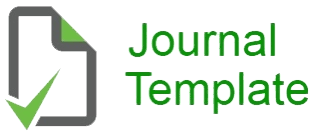Analisis Financial Distress dengan Accounting Ratio dan Forecasting Bankrupcy terhadap Perusahaan Perbankan Go Public di Indonesia (Studi Empiris : Perusahaan Perbankan Go Public Bursa Efek Indonesia Tahun 2010 - 2014)
Abstract
Penelitian ini bertujuan untuk menganalisis prediksi tingkat kebangkrutan dengan metode Altman Z Score pada perusahaan perbankan yang Go Public selama tahun 2010-2014, prediksi performadengan menggunakan intellectual capital pada perusahaan yang Go Public selama tahun 2010-2014 dan pengaruh antara intellectual capital terhadap resiko kebangkrutan pada perusahaan Go Public perbangkan selama tahun 2010 - 2014.Penelitian ini menggunakan metode kuantitatif untuk mengetahui pengaruh langsungnya. Sementara itu, untuk menganalisis resiko kebangkrutan menggunakan Altman Z-Score dan untuk menganalisis intellectual capitalnya menggunakan VAIC. Hasil Penelitian ini adalah a) Selama tahun 2010 – 2014 rata - rata perbankan yang terindikasi bangkrut 43,45%, abu-abu 50,34%, dan tidak bangkrut 6,21%. b) Nilai rata - rata intellectual capital pada tahun 2010 - 2014 dengan kategori top sebanyak 24,14%, good sebanyak 38,62%, common sebanyak 28,28 % dan bad sebanyak 8,97%. Dengan demikian dapat dikatakan bahwa intellectual capital perbankan di Indonesia relative baik untuk mendukung kinerja perusahaan. c) Terdapa tpengaruh negative yang signifikan antara intellectual capital terhadap resiko kebangkrutan.
Keywords
Full Text:
PDFReferences
Agarwal, V. and Taffler, R.J. (2007), “Twenty-five years of the taffler Z score model: does it really have predictive ability?”, Accounting & Business Research, Vol. 37 No. 4, pp. 285-300.
Al-Musalli, M. A. K., & Ismail, K. N. I. K. (2012). Corporate Governance, Bank Specific Characteristics, Banking Industry Characteristics, and Intellectual Capital (IC) Performance of Banks In Arab Gulf Cooperation Council (GCC) Countries. Asian Academy ofManagement Journal of Accounting and Finance, 8(Supp. 1), 115-135.
Altman, E.I. (2002), “Corporate distress prediction model in a turbulent economic and Basel II environment”. Emerald Group Publishing Limited, Strategic & Leadership,
Andriessen, D. (2004). Making sense of intellectual capital : designing a method for thevaluation of intangibles. Jordan Hill, Oxford, UK: Elsevier, Inc.
Basuki, &Kusumawardhani, T. (2012). Intellectual Capital, Financial Profitability, and Productivity: An Exploratory Study of the Indonesian Pharmaceutical Industry. AsianJournal of Business and Accounting 5(2), 41-68.
Bellora, L., & Guenther, T. W. (2013). Drivers of innovation capital disclosure in intellectual capital statements: Evidence from Europe. The British Accounting Review, 1-16.
Brinker, B. (1998). Intellectual capital: Tomorrow’s asset, today’s challenge. Retrieved 15 December, 2006, from http://www.cpavision.org/vision/wpaper05b.cfm
Brooking, A. (1996). Intellectual Capital: Core Assets for the Third Millennium. London: Enterprise Thomson Business Press.
Brigham, Eugene. Joel F.Houston. 2001. ManajemenKeuangan. Edisikedelapan. Buku II. Jakarta: Erlangga.
Calandro, J. (2007), “Considering the utility of Altman’s Z score as a strategic assessment and performance management tool”, Emerald Group Publishing Limited, Strategic & Leadership, Vol. 35 No. 5, pp. 37-43.
Hesse, H. and Cihak, M. (2006), “Cooperative banks and finance stability”, IMF Draft, available at: www.ifk-cfs.de (accessed 24 April 2008).
IkatanAkuntan Indonesia. (2012). StandarAkuntansiKeuangan. Jakarta: IkatanAkuntan Indonesia.
Jayadev, M. (2006), “Predictive power of financial risk factors: an empirical analysis of default companies”, The Journal for Decision Makers, Vol. 31 No. 3, pp. 45-56.
Kasmir. 2008. Bank danLembagaKeuanganLainnya. EdisiRevisi. Jakarta: PT. Raja GrafindoPersada.
Kamal, M. H. M., Mat, R. C., Rahim, N. A., Husin, N., & Ismail, I. (2011). Intellectual Capital and Firm Performance of Commercial Banks In Malaysia. Asian Economic andFinancial Review, 2(4), 577-590.
Kamath, G. B. (2007). The intellectual capital performance of Indian banking sector. Journa of Intellectual Capital, 8(1), 96-123. http://dx.doi.org/10.1108/14691930710715088
Khanqah, V. T., Khosroshahi, M. A., &Ghanavati, E. (2012). An Empirical Investigation of the Impact of Intellectual Capital on Firms ’ Market Value and Financial Performance: Evidence from Iranian Companies. International Journal of Management Business Research,2(1), 1-12.
Liu, Y., Papakirykos, E. and Yuan, M.W. (2004), “Market valuation and risk assessment of canadians banks”, Bank of Canada, Working Paper No. 34, September.
Muhammed, O. (2004), “Capital Adequacy Norms for Islamic Financial Institutions”, available at: www.islamic-finance.net (accessed 24 May 2008).
Parashar, S.P. (2000), “Z score of UAE companies”, Emirates Institute for Banking and Financial Studies, Research Paper, November.
Saudin, A.R. and Proporato, M. (2007), “Corporate bankruptcy prediction model applied to emerging economies: evidence from Argentina in the Years 1991-1998”, International Journal of Commerce & Management, Vol. 17 No. 4, pp. 295-311.
Sauer, T.G. (2002), “How may we predict bankruptcy?”, CCE, Business Credit Selected Topic, September, pp. 16-17.
Sugiyono. 2011. Metode Penelitian Kuantitatif, Kualitatifdan R&D. Bandung: Alfabeta.
Vogel, F.E. and Hayes, S.L. III (1998), Islamic Law and Finance, Religion, Risk, and Return, Kluwer Law International, The Hague, pp. 2-3.
Zhang, L., Chen, S., Yen, J. and Altman, E.I. (2006), “Corporate financial distress diagnosis in China”.
DOI: https://doi.org/10.52447/jam.v2i2.931
Refbacks
- There are currently no refbacks.






